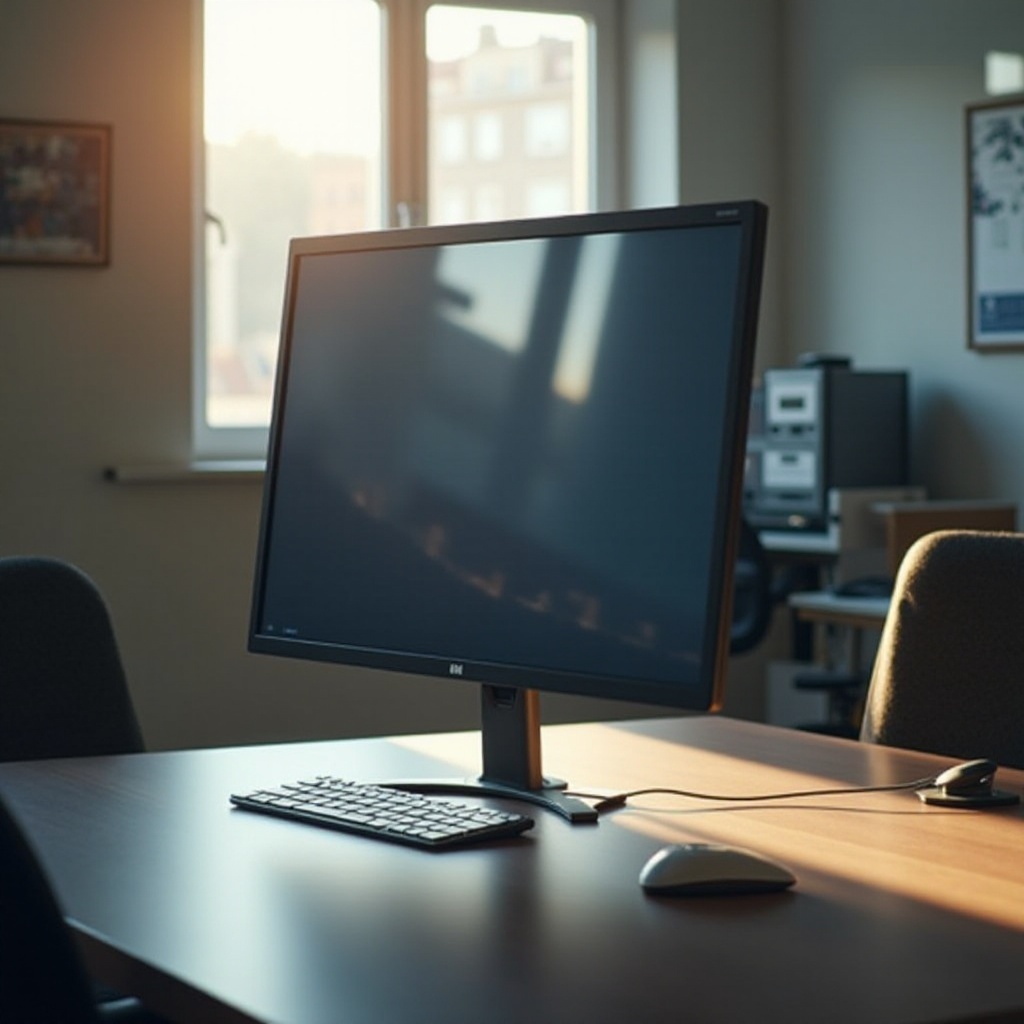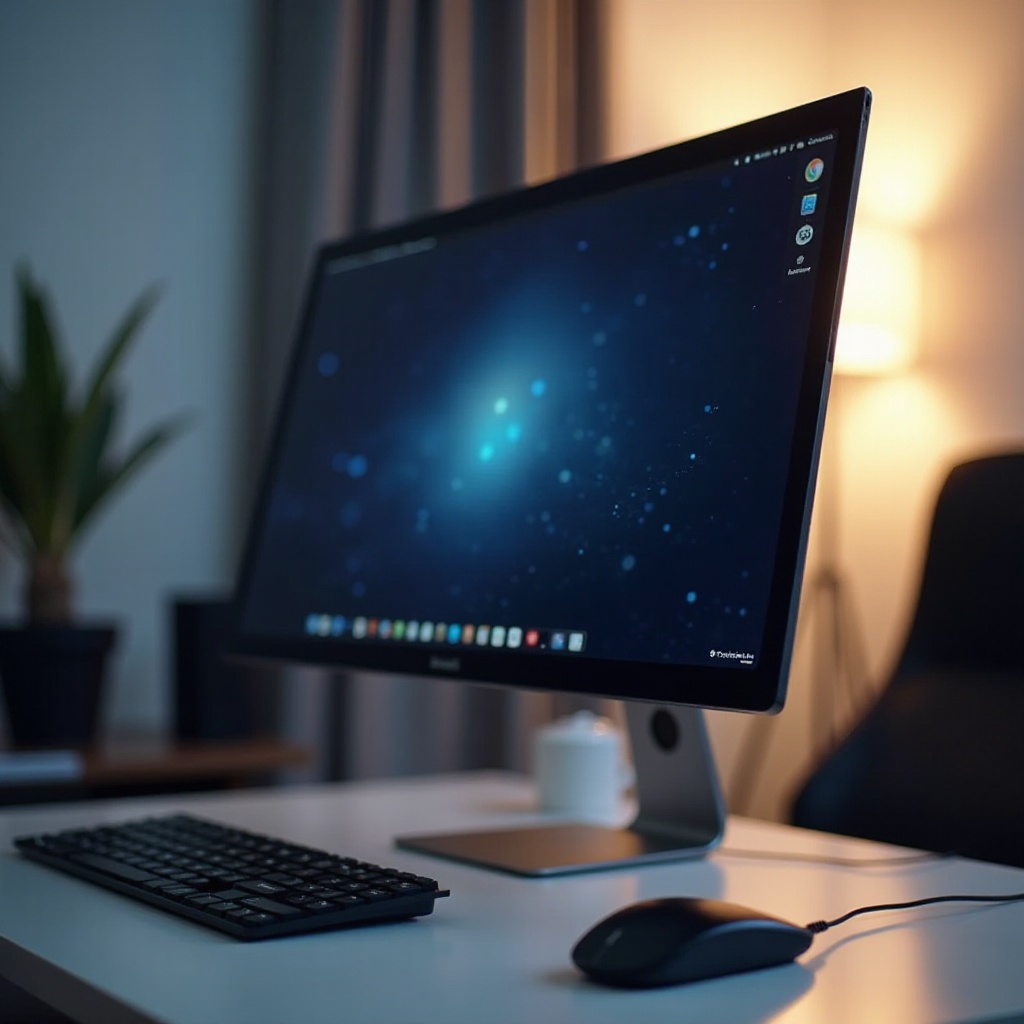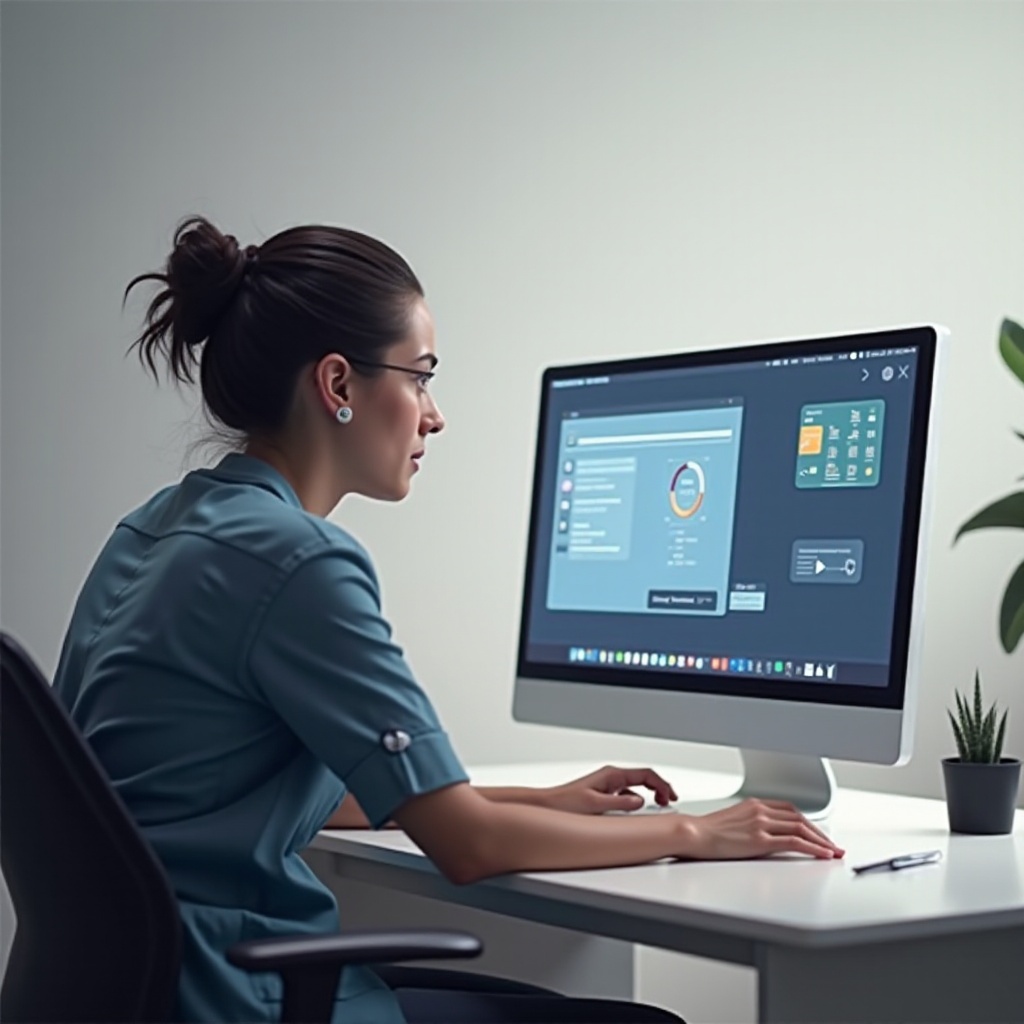Introduction
Encountering a monitor display that’s unexpectedly turned sideways can be both surprising and frustrating. This issue can spring from accidental keystrokes, incorrect display settings, or software glitches. Fortunately, resolving it is simpler than you might think, and you certainly aren’t alone if this has happened to you. We’re here to guide you through detailed solutions and explanations tailored for both Windows and Mac users. Whether you’re a tech expert or someone less familiar with tech fixes, this guide has got you covered.

Understanding Monitor Display Orientation
Displays today are incredibly versatile, with options to rotate between portrait and landscape modes, serving varied needs from design work to reading. However, unintentional orientation changes can occur, often through accidental key combinations or misconfigurations in software. Grasping the basics of how monitor orientation works can be the key to identifying why your display flipped and selecting the most suitable solution, ensuring it’s set exactly how you prefer.

Quick Fixes for Windows Users
For those using Windows, correcting a display that’s sideways can often be remedied with a few straightforward actions.
Using Keyboard Shortcuts
Keyboard shortcuts can both cause and solve the issue quickly. If your display is sideways:
- Press
Ctrl + Alt + Up Arrowto restore the screen to the usual landscape orientation. - For rotating it 90 degrees, use
Ctrl + Alt + Left ArroworCtrl + Alt + Right Arrow. - Press
Ctrl + Alt + Down Arrowto invert the display.
These shortcuts allow you to adjust the screen without entering deeper system settings.
Navigating Display Settings
If the shortcuts don’t help, the next step involves tweaking the display settings manually:
- Right-click on your desktop and choose
Display settings. - Locate the orientation options.
- Select
Landscapefrom the dropdown list. - Click
Applyand confirm withKeep changes.
These simple fixes can ensure your display returns to its normal setting with minimal interruptions.
Bridging to Mac Solutions
While we’ve tackled quick fixes for Windows, Mac users have their own set of solutions for dealing with sideways screens effectively.
Solutions for Mac Users
Mac’s system structure provides a different method to address orientation challenges, offering efficient steps for users.
Accessing System Preferences
Begin by accessing the appropriate settings:
- Click on the
Apple menuand selectSystem Preferences. - Navigate to
Displaysto find adjustment settings. - Ensure the
Displaytab is active so you can proceed.
Adjusting Orientation Settings
With system preferences open, adjust your display’s settings:
- Within the
Displaytab, find theRotationsetting. - Use the dropdown to select
Standardfor normal orientation. - Opt for
Landscapeif visible to return to the usual configuration. - Confirm the changes so the screen resets instantly.
These easy steps help Mac users restore their screen alignment without too much hassle.
Advanced Troubleshooting Methods
Sometimes, even after employing basic methods, the problem might persist. This calls for advanced troubleshooting.
Rebooting and Checking Drivers
Start by rebooting your device to eliminate any temporary conflicts, giving your system a fresh start. Next, examine your display drivers:
- Access
Device Manageron Windows orAbout This Mac > System Reporton Mac. - Check the status of display adapters.
- A reboot after applying updates can resolve lingering issues.
Updating or Reinstalling Graphics Drivers
In some cases, updating or reinstalling drivers becomes essential:
- On Windows, download the latest drivers from the manufacturer’s site.
- Utilize
Device Managerto automatically update or manually select the files. - Reboot your PC to apply updates.
- For Macs, keeping up with system updates ensures compatibility and peak performance.
Connecting Back to Prevention Techniques
After delving into fixes, it’s crucial to understand how to prevent these orientation issues from recurring.
Tips for Preventing Future Orientation Issues
Implementing proactive strategies can help in avoiding future display misalignments.
- Regularly update your system software and drivers to circumvent incompatibility issues.
- Keep your keyboard secure and workspace neat to avoid accidental presses.
- Customize and disable rotation key shortcuts if unnecessary.
- Maintain an ergonomic setup for minimized physical interactions with your monitor.
Following these steps helps in minimizing disruptions and enhances your productivity.

Conclusion
Though having a monitor display flipped can be inconvenient, resolving the problem involves simple steps that are accessible to anyone. Recognizing and understanding the signs early on allows for quick corrections, thus avoiding prolonged discomfort or confusion. Adopting these solutions, applying preventive guidelines, and ensuring drivers are updated will keep your monitor orientation steady and reliable for the enduring future.
Frequently Asked Questions
How can I rotate my screen back to normal without keyboard shortcuts?
Access your display settings via the control panel or system preferences. From there, you can manually set the orientation to your desired layout, such as landscape.
What should I do if the display settings don’t fix the issue?
Consider updating or reinstalling your graphics drivers. Reboot your device post-installation to apply new settings. If issues persist, consult your hardware provider for support.
Can I lock my display orientation to avoid this problem?
Yes, some systems offer an option to lock screen orientation in the display settings. Activating this lock will help keep your screen orientation constant, reducing the likelihood of future issues.
